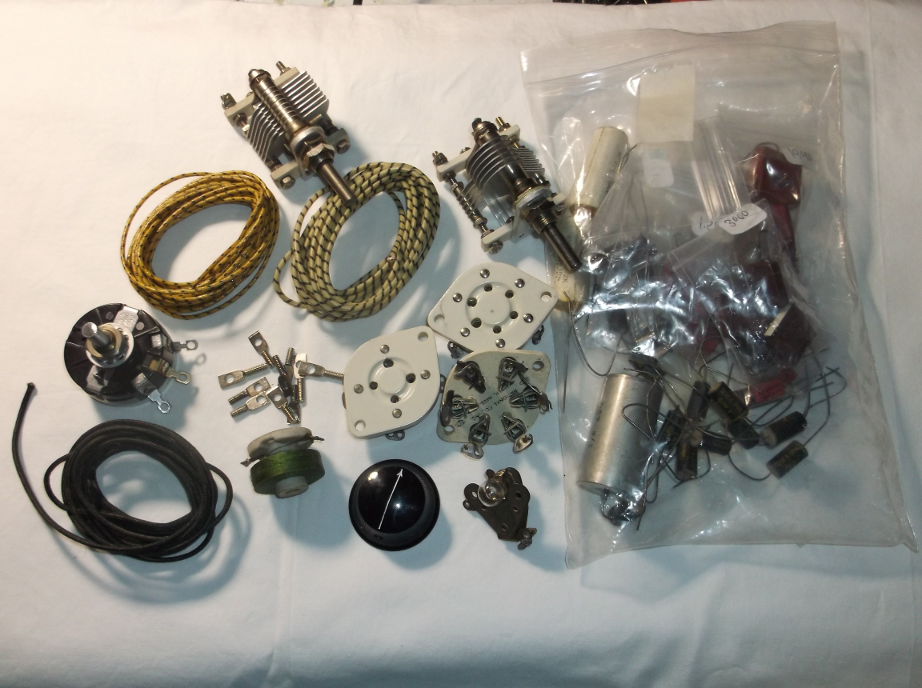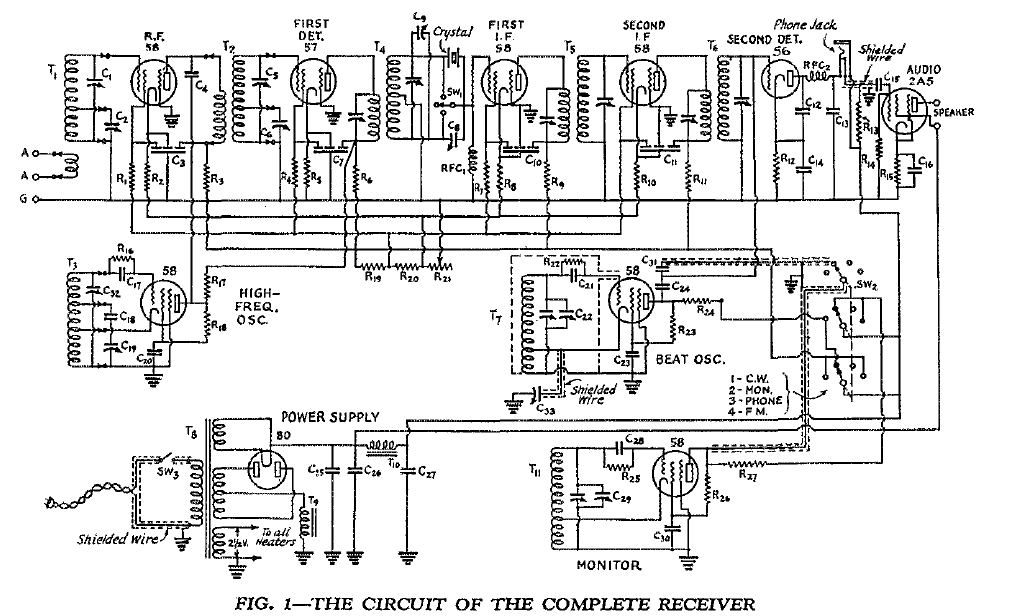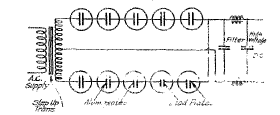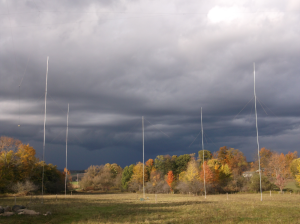Parts Acquisition
Over the last few weeks I’ve been acquiring parts to complete the 1934 superhet receiver. As with many projects around here, it seems a bit of luck plays a hand in some finds.
Through some casual searching online, I found a source (oldradioparts.com) for many of the necessary parts, including some useful items for future transmitter projects. National ceramic tube sockets (4, 5, and 6 pin), cloth wire, vintage mica and paper caps, high inductance RFCs, National SE / ST style variables, and National vernier dial lamps were amongst the goodies:
I decided to try and source the IF transformers and crystal filter by Continue reading …..





